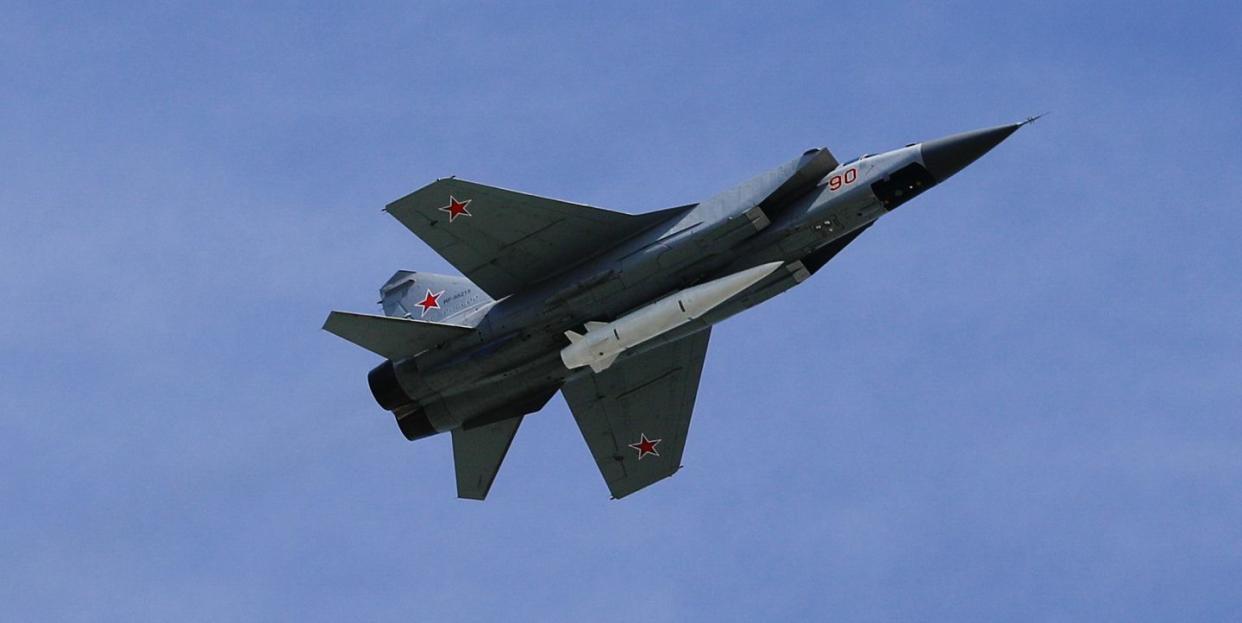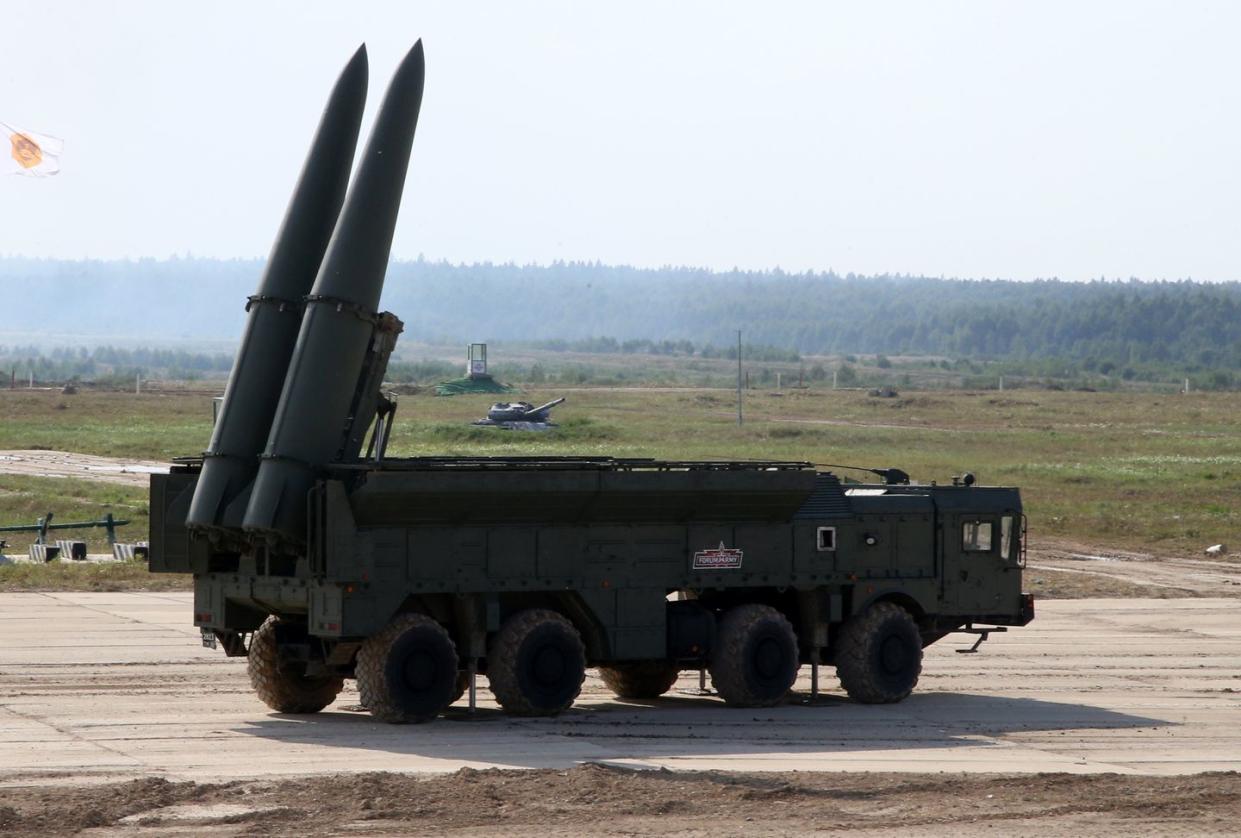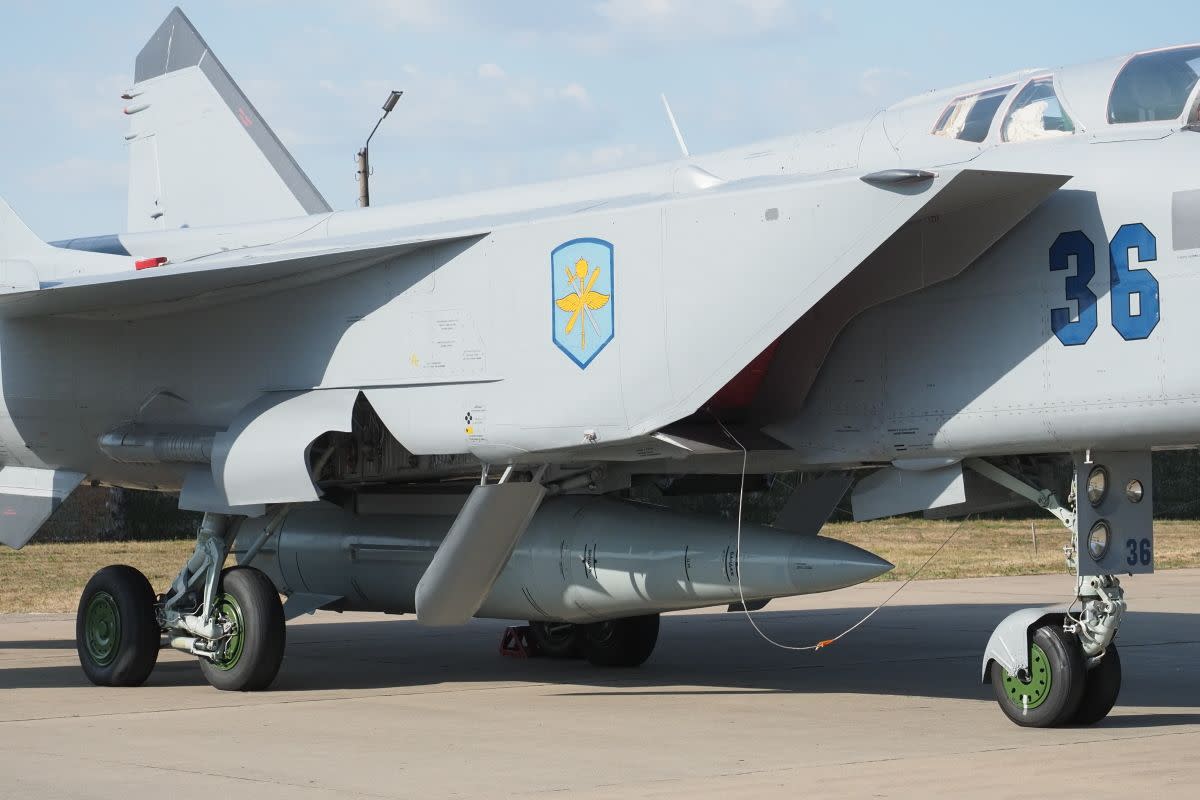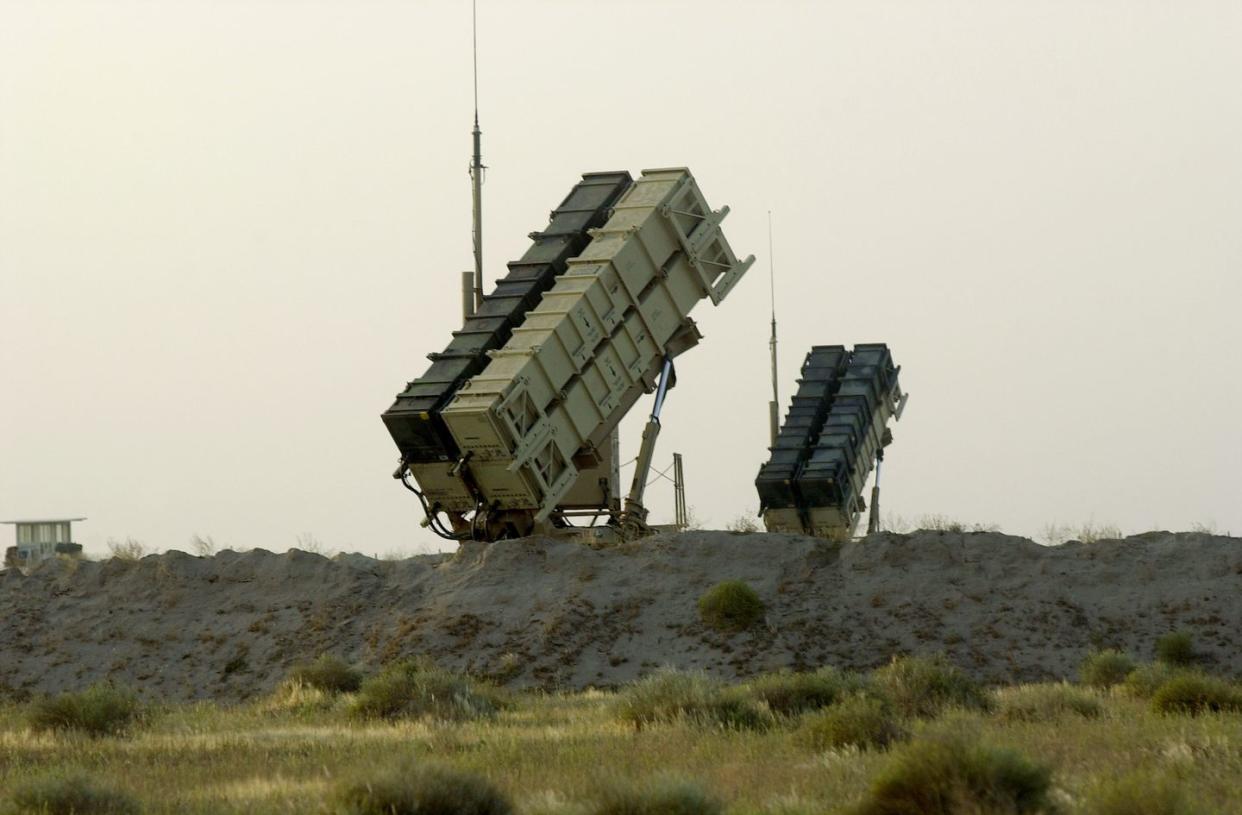For the First Time, a Patriot Missile Has Killed One of Russia’s Hypersonic Missiles

Russia’s Kinzhal air-launched hypersonic missile had proven capable of penetrating Ukraine’s generally formidable air defenses without a single one reportedly downed while streaking toward targets across Ukraine for over a year.
But on May 4, the weapon’s hot streak apparently ran out, as testified by fragments of a missile nose-cone that reportedly fell on a stadium in Kyiv at 2:40 AM.
#Ukraine: Today, reports suggested that a Russian Kh-47M2 Khinzal air-launched ballistic missile was shot down by air defences over #Kyiv at 02:40 on May 4th- for the very first time.
The debris matches the unitary warhead assembly used in Kh-47M2 & Iskander-series missiles. pic.twitter.com/RjAcBQYEUN— 🇺🇦 Ukraine Weapons Tracker (@UAWeapons) May 5, 2023
Multiple sources identified the nose cone as likely coming from a Kinzhal missile, which officially goes by the unwieldy designation 9-S-7760, and is codenamed the ‘Killjoy’ by NATO.
And several suggested the kill was achieved by one of Ukraine’s newly active Patriot air defense batteries. If that’s true, it’s a remarkable debut for the system’s operational career in Ukraine.
Initially, though, the ID was contested. There was the possibility the downed weapon was instead a land-based Iskander tactical ballistic missile (also a hypersonic weapon, though less often hyped as such) upon which the Kinzhal is based.
Ukraine Weapon Tracker, a respected account known to ID weapons usage, noted:
“The debris matches the unitary warhead assembly used in Kh-47M2 & Iskander-series missiles. Further imagery is required to fully confirm the type of the missile - but both Iskander and Kinzhal are ballistic missiles which are regarded as extremely difficult to intercept; except by modern Western Air Defense systems that are entering service in Ukraine…We are confident in our ID.”
Ukrainian Air Force spokesperson Yuriy Ihnat cast doubt that a Kinzhal was downed, with statement claiming: “There was a possibility of [Kinzhal’s] use, but no ballistic missiles were recorded.”
But then on Saturday, Ukrainian Air Force commander Mykola Oleshchuk finally confirmed on a Telegram post the "historic event": one of the UAF's new Patriot missiles had indeed downed the "unparalleled" Kinzhal. He noted the Kinzhal had been launched from over Russian airspace by a MiG-31K fighter, and admonished the media for reporting the incident in advance of his confirmation.
Some sources allege Ukraine’s military initially cast doubt on the kill because it didn't want Russia to know it could down Kinzhal missiles or that a Patriot battery was active in Kyiv, and was frustrated when the news leaked. However, the widespread dissemination of the image of the downed nose cone perhaps caused a change in media strategy.
Russia’s Hypersonic “Dagger”
For years, Russia has touted its lead fielding new hypersonic weapons, referring to missiles that attain velocities exceeding five times the speed of sound—which is to say, a mile per second or faster. Unlike earlier high-arcing ballistic missiles that attained hypersonic speeds, the new weapons travel in a flatter arc within, or skipping just above, the Earth’s atmosphere, and in some cases can maneuver evasively to avoid defenses.

The Kinzhal (“Dagger”) is a weapon based on Russia's truck-launched Iskander ballistic missile modified for air-launch to attain greater range and flexibility, and incidentally circumvent restrictions imposed on land-based missiles by the now-defunct INF arms control treaty. A special variant of the MiG-31 Foxhound interceptor designated the MiG-31I (or MiG-31K, popularly) helps the missile attain high speeds and altitude before even igniting its rocket boosters.

And that amounts to a big boost: being launched at high altitude (sparing the huge energy expenditures needed to rocket up into the sky, and starting where the air is thinner and imposes less friction) and already traveling at high speeds by perhaps the fastest combat aircraft currently in service.
While an Iskander has a maximum speed of Mach 5.9 and (officially) a range of 310 miles due to INF treaty restrictions, the Kinzhal's rocket boosters accelerate it up to Mach 10 or higher, and it has a range of 1,200 miles, making it applicable for strikes on NATO targets across Europe and the Mediterranean.
However, despite assumptions the Kinzhal can carry a nuclear warhead like an Iskander missile, it so far appears to have been deployed only with conventional warheads. Furthermore, it is not a highly maneuverable hypersonic glide vehicle-type weapon as is often assumed, and thus relies more on pure speed than maneuverability to penetrate defenses. Nor is it a hypersonic cruise missile with propulsion to sustain near-maximum speeds for a prolonged period.
Still, the Iskander (and thus likely Kinzhal) can perform some evasive maneuvers and release decoys to foil air defenses, in contrast to prior-generation Russian tactical missiles.
Kinzhal’s primary military value to Russia in its conflict with Ukraine has been the difficulty in intercepting the ultra-fast weapon, as even commented upon by President Biden. While Ukrainian air defenses allegedly shoot down well over half of incoming cruise missiles and kamikaze drones, the Kinzhals come in to too fast for Kyiv’s Soviet-era defenses to respond in time.
The weapon made its combat debut in Ukraine, with strikes reported on a fuel and subterranean weapons depots in March 2022, followed by sporadic attacks in subsequent months. Then, that fall, small numbers of Kinzhals began to be launched in concert with subsonic cruise missiles and kamikaze drones as part of Russia’s new sustained strategic bombing campaign targeting Kyiv and other major Ukrainian cities.
Use of the hypersonic missiles ramped up substantially in March 2023, when six out of 84 missiles hurled at Ukrainian targets were Kinzhals. This large-scale assault knocked out electricity in many regions and killed six civilians. It's believed around 50 Kinzhals in total have been launched at Ukraine since March 2022.
Enter the Patriot
The arrival of MIM-104 Patriot missile batteries donated by Germany and the United States in Ukraine this April undoubtedly improves the odds Kyiv's air defenses will knock down Kinzhals. The first cohort of Ukrainian Patriot operators had only just completed a 10-week course in Fort Sill, Oklahoma in March.
Imagery has confirmed the transfer of the longer-range PAC-2 GEM-T missile (max range 93 miles) from Germany which uses a proximity-fused fragmentation warhead, rather than the missile-defense optimized PAC-3 which is a hit-to-kill system designed to swat missiles through kinetic impact. However, other reports indicate Germany and the U.S. are also sending newer PAC-3 missiles seen as potentially effective against ballistic missiles within 20 miles.
While some commentators have speculated the downing must be the work of a hit-to-kill weapon, should the interceptor weapon have directly struck the missile at supersonic speeds, it seems likely the crashed nose cone would not have remained so intact.

The PAC-2 GEM-T has a substantially longer-range of around 100 miles compared to around 56 miles for Ukraine’s already capable S-300P-series missiles, and boasts far more modern radars and fire control systems. And while GEM-T is less optimal to intercept missiles than a PAC-3, it nonetheless is a model that had its fuse and active radar seeker tweaked to improve performance against such weapons. Saudi Arabian PAC-2s in particular have successfully downed (admittedly slower) ballistic missiles lobbed at them by Houthi rebels in Yemen.
It's worth noting that even the missile defense-optimized PAC-3 MSE missiles are seen as a lower-layer defense compared to the THAADS and SM-3 type interceptors fielded by the U.S. Army and Navy, which can potentially intercept medium/intermediate-range missiles from much greater distances.
Overall, though, it looks like the much-inflated hype bubble surrounding Russia’s hypersonic wonder missile may have been deflated at least a bit.
You Might Also Like
